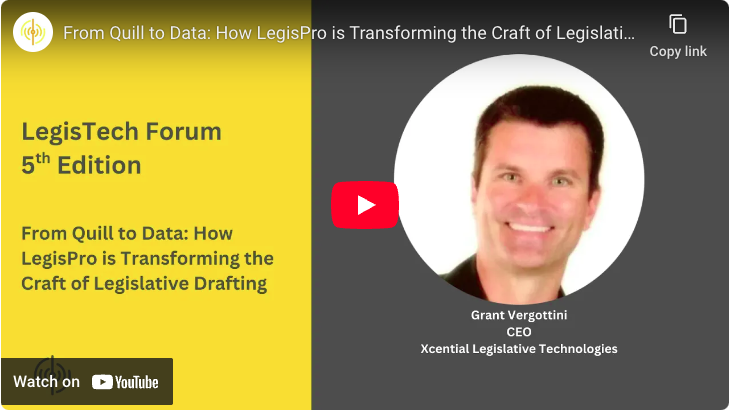Connected Information
August 19, 2015


As a proponent of XML for legislation, I’m often asked why an XML approach is better than a more traditional approach using a word processor. The answer is simple – it’s all about connected information.
The digital end point in a legislative system can no longer be publication of PDFs. PDFs are nothing but a kludgy way to digitize paper — a way to preserve the old traditions and avoid the future. Try reading a PDF on a cell phone and you see the problem. Try clicking on a citation in a PDF and you see the problem. Try and scrape the information out of a PDF to make it computer readable and you see the problem. The only useful function that PDFs serve is as a bridge to the past.
The future is all about connected information — breaking the physical bounds of what we think of as a document and allowing the nuggets of information found within them to be connected, interrelated, and acted upon. This is the real reason why the future lies with XML and its related technologies.
In my blog last week I provided a brief glimpse into how our future amending tools will work. I explored how legislation could be managed similar to how software is managed with GitHub. This is an example of how useful connected information becomes. Rather than producing bills and amendments as paper documents, the information is stored in a way that it can be efficiently and accurately automated — and made available to the public in a computer readable way.
At Xcential, we’re building our new web-based authoring system — LegisPro. If you take a close look at it, you’ll see that it has two main components. Of course, there is a robust XML editor. However, at the system’s very heart is a linking system — something we call a resolver. It’s this resolver where the true power lies. It’s an HTTP-based system for managing all the linkages that exist in the system. It connects XML repositories, external data sources, and even SQL databases together to form a seamless universe of connected information.
We’re working hard to transform how legislation, and indeed, all government information is viewed. It’s not just about connecting laws and legislation together through simple web links. We talking about providing rich connections between all government information — tying financial data to laws and legislation, connecting regulatory information together, associating people, places, and things to government data, and on and on. We have barely started to scratch the surface, but it’s clear that the future lies with connected information.
While we today position LegisPro as a bill authoring system — it’s much more than that. It’s some of the fundamental underpinnings necessary for a system to transform government documents of today into the connected information of tomorrow.








